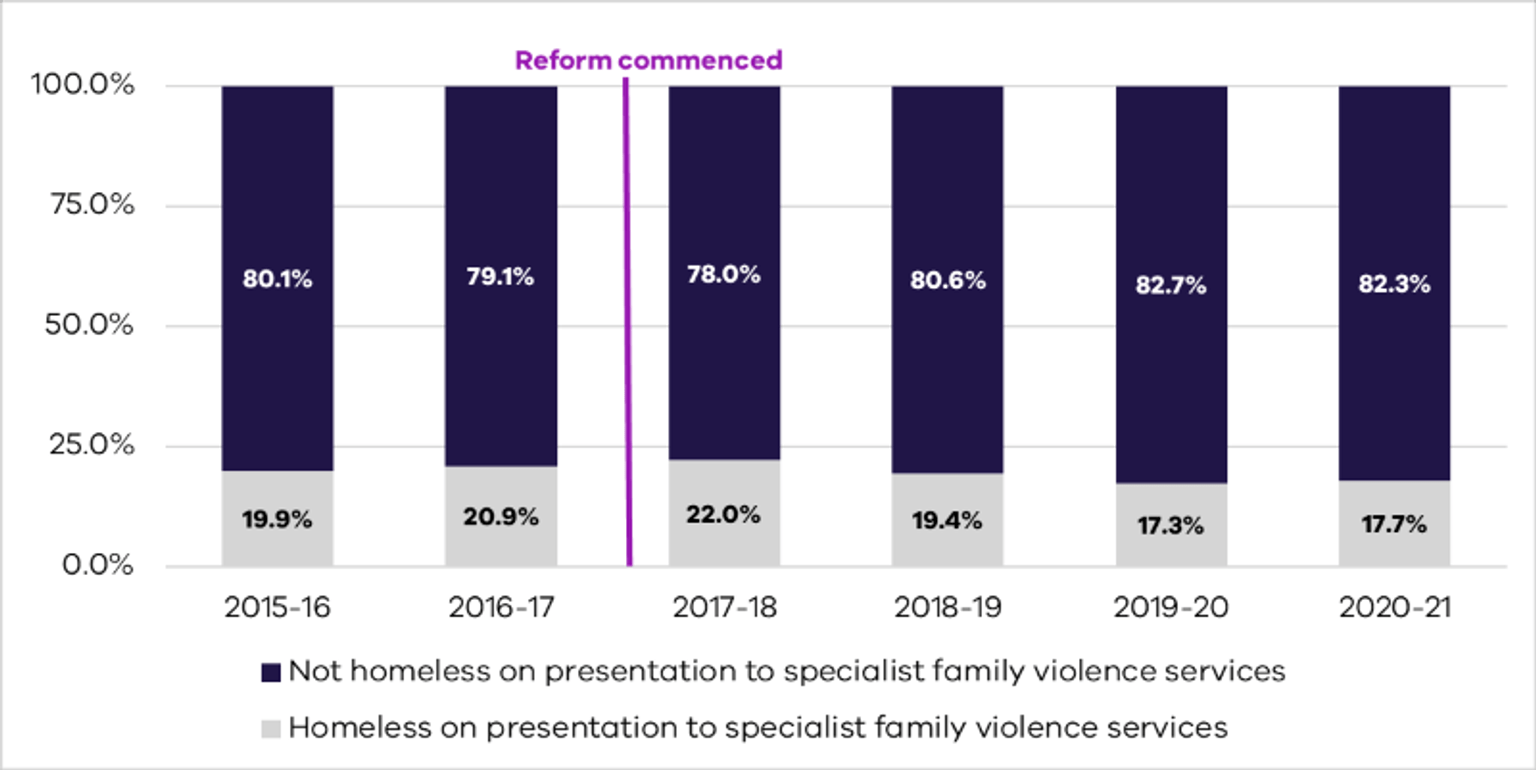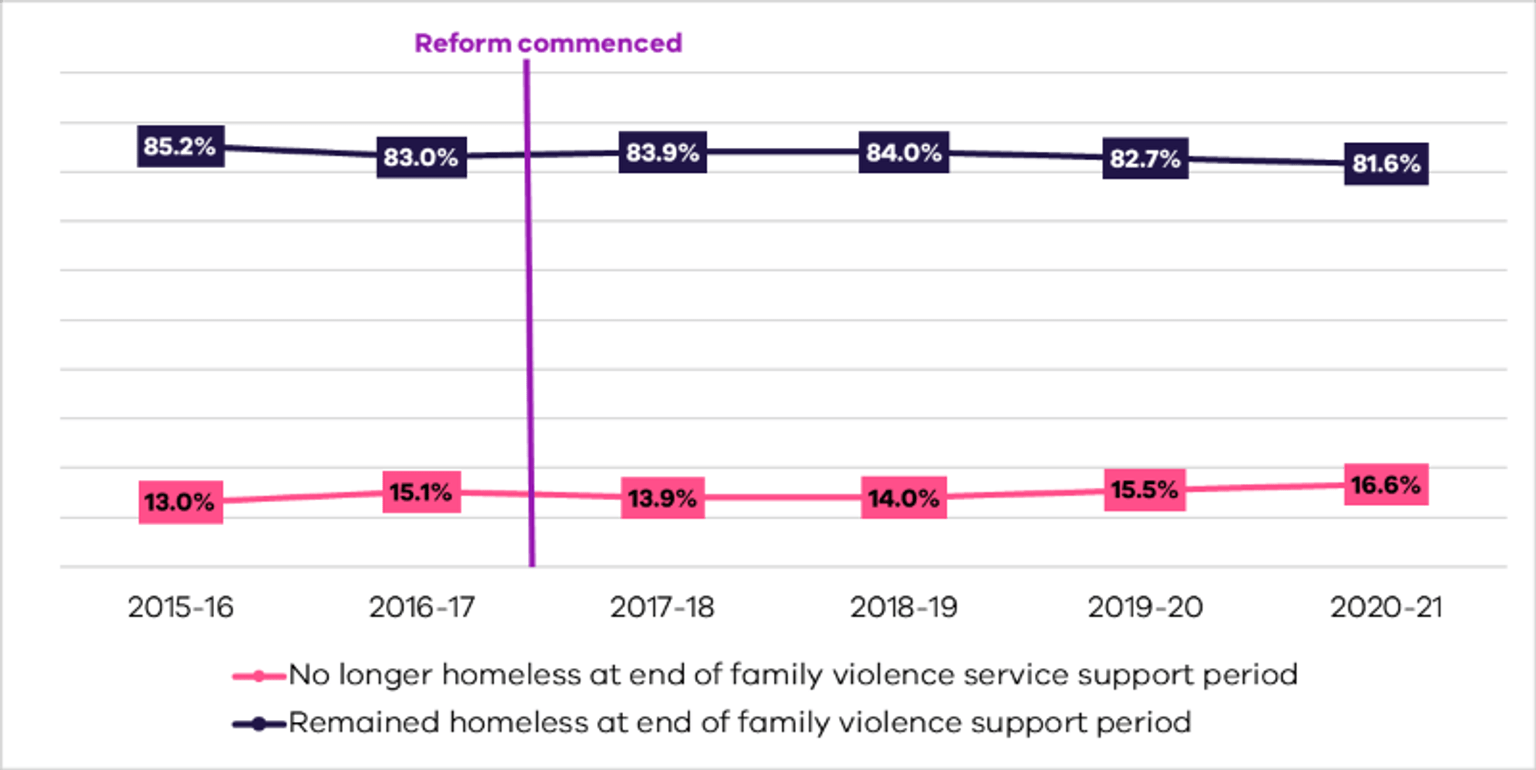Indicator: Increase in victim survivors who have safe, secure, stable and affordable housing
Family violence is recognised as a leading cause of homelessness, especially for women and children.
Homelessness can occur as a direct result of experiencing family violence – for example, having to leave the home for safety from a perpetrator’s use of violence. Structural barriers including gender inequality, a lack of affordable housing, and limited social support can also prevent victim-survivors from finding a safe and secure place to live.
Measure: Proportion of victim survivors who are homeless or without a permanent place to live
In 2020-21 there were 5,472 family violence service cases1 where victim survivors identified themselves as homeless. This was an increase from 4,693 in 2015–16.
Despite the increase in numbers, the proportion of family violence cases where victim survivors identified as homeless decreased slightly from 19.9 per cent in 2015–16 to 17.7 per cent in 2020–21.
Data shows that clients accessing refuges make up the greatest proportion of victim survivors experiencing homelessness. This cohort also tends to be at highest risk as they are often forced to leave their homes to escape the violence.
Family violence is the number one cause of homelessness for women. Stable housing is identified as a critical protective factor in promoting safety, wellbeing and recovery for victim survivors of family violence.
Measure: Number and Proportion of victim survivors who experience an improvement in their housing situation after receiving a service
There has been an increase in the number and proportion of victim survivors receiving family violence support who indicated they were homeless at the start of their support period and were in secure housing by the end of their support period.
In 2020–21, there were 877 family violence service cases where victim survivors who identified as homeless on presentation were recorded in secure housing at the end of their support period. This represents 16.6 per cent of total family violence service cases and compares with 590, or 13.0 per cent, in 2015–16.
Despite the above improvement, in 2020–21 about 80 per cent of family violence service cases with victim survivors who indicated homelessness when they initially accessed family violence support services remained homeless when their support period ended.
Many family violence refuge clients exit the system to transitional housing and other temporary accommodation arrangements (which fall within the definition of homelessness) while they await a more stable and secure housing pathway.
Notes
1In this report, ‘family violence cases’ count one client per presenting group or household.
Updated

